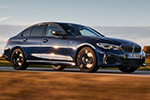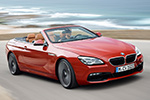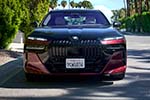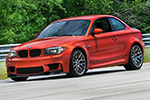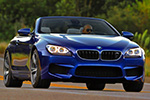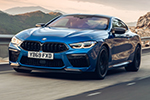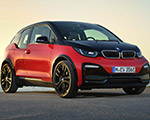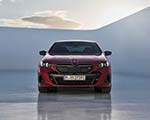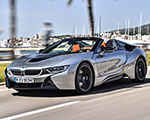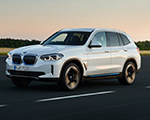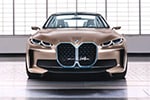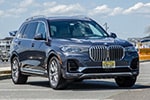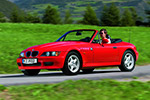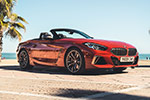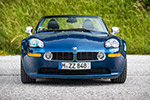At Plant Landshut, where some of the BMW’s most advanced electric components are developed, we attended a workshop that provided an inside look at the Neue Klasse’s electric drivetrain. Fresh off discussions about BMW’s sixth-generation (Gen6) battery technology, our attention turned to the second half of the equation: the electric motors responsible for putting power to the pavement.
While battery advancements often dominate EV discussions, motors and power electronics are just as crucial in defining how an electric car performs, how efficiently it uses energy, and—most importantly for BMW—how it drives. And not surprisingly, the company isn’t following the industry playbook.
More Power, More Flexibility
Unlike many automakers relying solely on permanent magnet synchronous motors (PSM)—which use rare earth materials—BMW is taking a different approach, combining externally excited synchronous motors (EESM) on the rear axle and asynchronous motors (ASM) on the front.
BMW’s Gen5 electric drive system, used in models like the iX and i4, has matured since its introduction in 2018. But Gen6 improves in nearly every way. One of the biggest changes? More motors, more power, and a more adaptable platform.
Instead of the dual-motor setups used in most of today’s performance EVs, the Neue Klasse platform can accommodate up to four electric motors. That’s a major leap in flexibility. These motors are lighter, more efficient, and less expensive to produce, thanks to refinements in their design and materials.
BMW engineer Michael Salmansberger gave us a closer look at the new motors, explaining that four variants of the EESM units are planned, each weighing around 125 kg (276 lbs) and producing between 268 hp (200 kW) and 402 hp (300 kW). The ASM will come with two variants in the front axle – 120 and 180 kilowatt. The EESM motors can produce between 270 hp (200 kW) and 402 hp (300 kW)
The power potential is obvious—BMW could scale from a single-motor Neue Klasse sedan to a quad-motor, high-performance M car with over 1 megawatt (1341 hp) using the same base technology. We’ve already seen what the BMW Vision Driving Experience prototype can do.
There’s also a change in how that power reaches the wheels. Instead of a traditional two-speed gearbox, BMW is using a single-speed transmission, but it operates as a two-stage gearbox thanks to an intermediate shaft that adjusts the gear ratio as needed. It’s essentially a high-performance single-gear system designed for both motors.
Why BMW is Moving Away from Permanent Magnets
Most premium EVs today, including those from Tesla, Lucid, and Mercedes-Benz, rely on permanent magnet motors for their high efficiency and compact size. The catch? They require rare earth materials, which are expensive, environmentally problematic to mine, and subject to geopolitical supply chain issues.
BMW’s externally excited synchronous motor (EESM) eliminates that dependency by generating its own magnetic field using an electrically excited rotor instead of a permanent magnet. This has some key advantages:
- No reliance on rare earth materials, making sourcing and production more sustainable.
- More precise control over torque delivery, since the magnetic field can be adjusted dynamically.
- Reduced energy losses at lower loads, improving overall efficiency.
However, there’s a reason EESM motors aren’t common—they require electrical input to generate the magnetic field, which can slightly reduce efficiency under constant high-load conditions. BMW acknowledges this but argues that in real-world driving, the ability to optimize power output dynamically outweighs the downsides. By adjusting the excitation levels on the fly, BMW’s Gen6 motors can fine-tune efficiency based on driving conditions, something permanent magnet motors can’t do as effectively.
A Smarter Front Motor for Efficiency
BMW’s choice to use an asynchronous motor (ASM) on the front axle is just as strategic. Unlike synchronous motors, an ASM doesn’t require continuous electrical input, meaning it can remain inactive when front-wheel traction isn’t needed. That means less energy consumption during normal driving while still allowing instant engagement when extra grip or power is required.
While ASMs tend to be slightly less efficient when engaged compared to permanent magnet motors, the key advantage here is their ability to operate with zero drag when not in use. This setup allows BMW to balance efficiency and xDrive performance dynamically, rather than forcing all four wheels to be powered at all times.
The result? A system that maximizes range in normal driving while keeping AWD capability on standby for when it’s needed.
Silicon Carbide: The Secret Efficiency Booster
Even with better motors, power electronics make or break an EV drivetrain. That’s why BMW is transitioning to silicon carbide (SiC) semiconductors (seen already in the facelifted BMW iX), which reduce energy losses in power conversion, allowing for:
- More efficient operation at 800V
- Lower heat generation, meaning smaller cooling systems and improved durability
- Faster and more precise power management, improving both efficiency and responsiveness
BMW claims these changes contribute to a 20% efficiency gain across the entire powertrain, though real-world results will ultimately determine how much of that translates into improved range and performance.
Scalability: From Efficiency to M Performance
One of the biggest takeaways from the Landshut workshop was how modular and scalable BMW’s new electric drive system is.
A single-motor rear-drive Neue Klasse will be the most efficient setup, but for high-performance models, BMW can add additional EESM motors for more power and AWD capability. Future M cars could use a quad-motor setup, enabling advanced torque vectoring, rear-biased AWD handling, and extreme power outputs.
The system has been designed from the outset to allow for precise power distribution between axles and individual wheels.
A Different Approach from the Competition
BMW’s strategy differs from competitors in a few key ways.
- Tesla and Lucid continue refining permanent magnet motor tech, prioritizing outright efficiency and power density.
- Porsche and Audi take a hybrid approach, combining PSM and ASM motors for performance optimization.
- Mercedes-Benz remains committed to rare earth-based PSM setups for their high efficiency and predictable power output.
BMW is betting that its rare-earth-free approach will pay off in cost, efficiency, and long-term sustainability, even if it requires more sophisticated power management.
Engineering Over Hype?
Attending BMW’s Landshut workshop highlighted one thing: the company isn’t rushing into EVs just to meet regulations or follow trends. It wants to apply the same engineering-led approach that has defined its combustion powertrains for decades. Will they rise to the top? We will soon find out, but for now, the theory sounds great.

















































